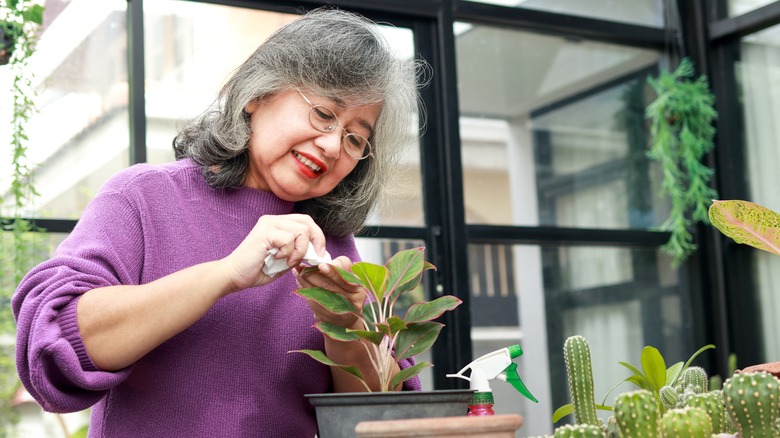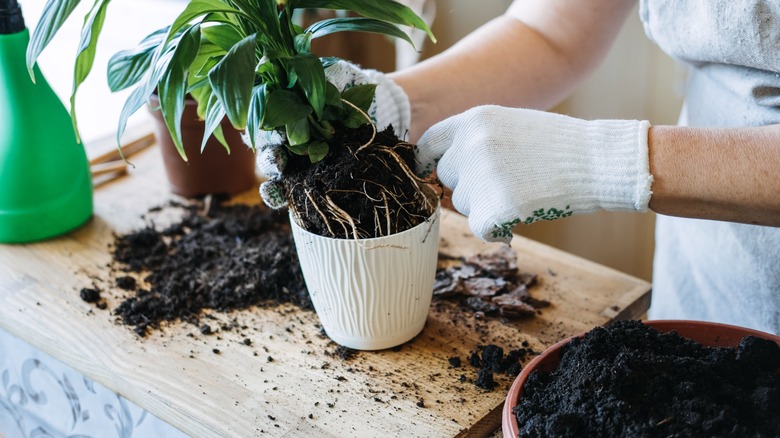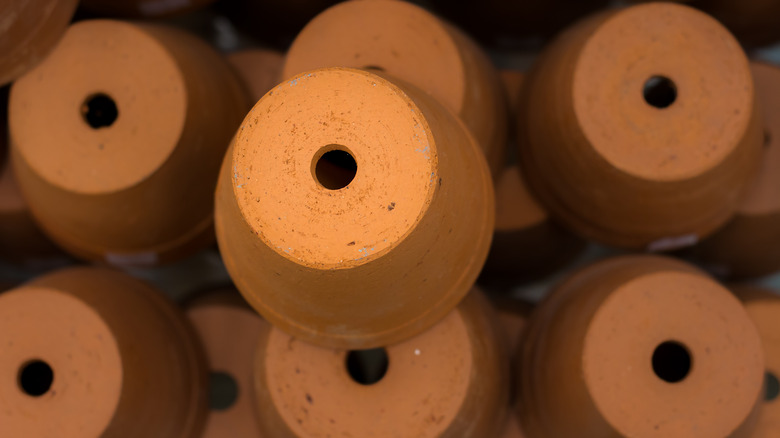How To Save Your Overwatered Plant
Although it may seem like an easy task, growing and maintaining plants can be a struggle regardless of your skill level. Whether you're an avid gardener or you're attempting to plant your first seed, your sprouts can wilt down with a variety of issues even if you provide them with everything they need. Good Earth Plant Company Inc further explains that it's common for plant parents to provide their gardens and potted collections with too much of a necessity, causing the same level of harm that would occur if they hadn't provided enough. This is usually the case with overwatering.
According to Missouri Botanical Garden, giving your leafy friends too much water causes their soil to retain excessive amounts of moisture. This leads to a lack of oxygen around the roots, which will cause suffering throughout the rest of the plant's structure and may eventually kill it. You can determine that your garden or potted collection is overwatered when its leaves begin to turn yellow and develop brown edges or spots. Fragile, squishy stems accompanied by wet, clumping soil are also good indicators of too much moisture (per MBG Lifestyle). These signs, however, don't mean it's time to say goodbye to your plants. If you take action promptly, you can reverse the effects of overwatering and enjoy your leafy companions for many more days to come. Here's what you can do.
Saving an overwatered plant
When it comes to saving an overwatered plant, Houseplant Help expresses the importance of acting quickly. Waiting too long to take action can cost your leafy friend its life, therefore, you must recognize the signs and initiate the healing process as soon as possible. The first thing you need to do is create a dry space by preparing a shallow tray with an absorbent material, like newspaper, dish towels, or paper towels. Then, gently remove the plant from its pot and transition it onto the dry tray.
During this transition, Houseplant Help recommends using your fingers to gently brush off some of the soil from around the roots. Because you don't want to cause your plant any further stress, only remove the soil that easily detaches. After letting it dry overnight, you can start trimming away any damaged roots. You'll know a root is damaged by its mushy texture or dark color.
Finally, when only healthy parts of the root system remain, you can replant your leafy friend back into its original pot and surround it with fresh soil. Directly after planting, provide your plant with a little bit of water, but don't water again until the soil has had a chance to completely dry out. Depending on the extent of the damage, you can expect your plant to make a full recovery within a week or two.
Preventing future overwatering
Once your plant has been saved from drowning, the next important step is to make sure you never overwater your plants again. Luckily, with the right materials, Plant Care For Beginners notes that it's very easy to avoid making that mistake again.
First, ensure your plants are situated in the correct soil. Although most plants can benefit from an average well-draining potting mix, some different species need their dirt to contain specific levels of moisture. For example, a desert plant would need less moisture while a tropical plant would need considerably more. Overall, this will prevent your garden or potted collection from either drowning or drying out.
Plant Care For Beginners also states that potted plants should always be kept in pots that include drainage holes at the bottom of their containers. This simple feature prevents excess water from building up within the pot and damaging or drowning the plant's roots. If your favorite planter doesn't have drainage holes, simply purchase a grow pot that can fit inside your favorite pot to successfully strain your plant's environment of excess water.
Along with suitable soil and a pot with proper drainage, Life Hacker suggests creating a watering schedule by organizing your plant by species, general environmental conditions, and the dates they were previously watered. For this, a simple spreadsheet may prove to be very effective in helping you provide each of your plants with the perfect amount of water.


